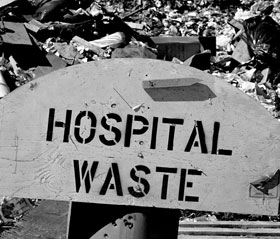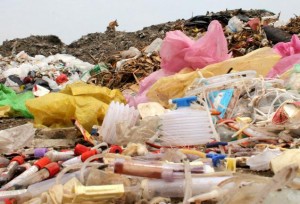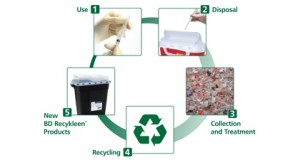We have heard, read various information from industries to cars to amusement parks are going green, taking small steps to maker greener environment. Out of which now hospitals are also taking measure steps in their policies to use resources more efficiently. As technology is revolutionizing mankind is moving towards making greener environment. We all have known and mostly read about waste and waste management. But have we thought about hospitals? How the waste is managed in hospitals. Yes hospitals create more toxic waste than the waste created by other institutions. A lot of bio-medical waste is created.
Now we need to understand what exactly bio-medical waste in hospitals is?
Bio-medical wastes are defined as wastes which are generated during the diagnosis, treatment or immunization of human beings or animals, or in research activities pertaining thereto, or in the production of biological.
Out of the bio-medical waste some are biodegradable and some are non biodegradable wastes. Hospitals generate approximately 7,000 tons per day of waste, including infectious waste, hazardous waste, and solid waste, mercury in medical devices, equipment, light bulbs, etc, some materials have toxic effect like PVC (Polyvinyl Chloride), DEHP, cleaning materials, heavy metals in electronics, pesticides, batteries. Large amount of energy in buildings and car fleet is consumed; Lot of significant green house gas is emitted. Lot of water is consumed for domestic purposes.
There are various categories of hospital wastes, Human anatomical wastes (waste created by human body parts),Waste Sharps (Needles, Syringes, scalpels, blades, glass), discarded medicines and cytotoxic drugs (outdated, contaminated, discarded drugs), soiled waste (contaminated with blood and body fluids including cotton, dressings, soiled plasters, and linen), chemical waste, incineration ash. Some solid wastes are disposed incineration and deep burial in the landfills; some are chemically treated and drained in water where as some are treated with autoclaving and microwaving.
Your eyes may have popped up by reading such wastes which are generated by hospitals are disposed in the landfills a large amount of land gets filled up with chemical hazard which releases so much of toxicity in the lands and the discharge of chemicals in the water! May push you in dilemma.
Such highly toxicities chemicals paves outlet to the locals, will affect the health and environment very badly. So a lot of care is taken while treating the wastes from hospitals. These wastes are highly on the verge of decomposing and are eroded very soon so they are treated within 48 hours most of the time.
As there are large amount of wastes generated there is need of proper management. There is a need to transform healthcare infrastructure from existing standards to zero energy, toxic free, zero waste, water balanced solution. For solving the water problems some amount of water can be gained by rain water harvesting, there would be need of ceasing the water wastage from showers and lavatories can be used in flushing toilets. Other clean water strategy involves converting sewage from the hospital into energy using high anaerobic digesters. This compost system will create Bio Natural Gas (BNG) which can be used to power the hospital systems. Water efficient toilets and lavatories can be used throughout the facility and solar panels can provide hot water. Some of these are becoming mandatory.
We can say that most of the hospitals are taking steps to alter the traditional way to modern way to extend their hand towards greener and better earth. The American Society of Healthcare Engineering (ASHE) framed green building initiatives in 2002 to safeguard health of a building’s occupants and health of the larger global community as well as conservation of natural resources. With the introduction of the green guide for health care and the US Green Building Council’s voluntary Leadership in Energy and Environmental Design program (LEED) most of those who have got themselves certified have reported energy demand reductions from 15 to 30 percent. There is a growing consensus among the health care profession that pollutants generated by medical facilities must be reduced. Moreover, green hospital design has been linked to better patient outcomes and staff retention and had been certified by LEED certification.
As we can see that its’ 21st century we are living and still one part of the world even now strangling for the accomplishment of basic needs like water. Where as in the usage of water some of water is wasted when large amount of water is transferred to hospitals, many hospitals have began to equip them with rainwater harvesting. Recycling the wastes which they can for example, Glass after cleaning and disinfection/sterilization, Paper, Corrugated cardboard, Aluminum, X ray film, Reclaimed silver from X ray film, Plastics which are non infectious component, hundreds of syringes, saline bottles, blood bags, slides and many other medical equipments can be recycled. Environmentally preferable medical waste treatment and disposal is considered.
We almost know that there are various sources for creation of pollution or waste for example, industries to waste generated at domestic level so we should also know that hospitals are also among them, and are the one from which hazardous toxic waste is created. Its management is necessary. And now various government organizations, all over the world taking steps by making various policies towards the waste management of hospitals.





Leave a Reply